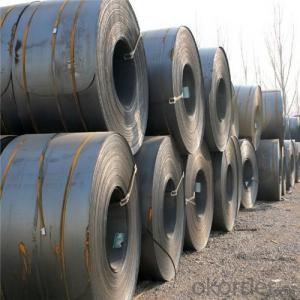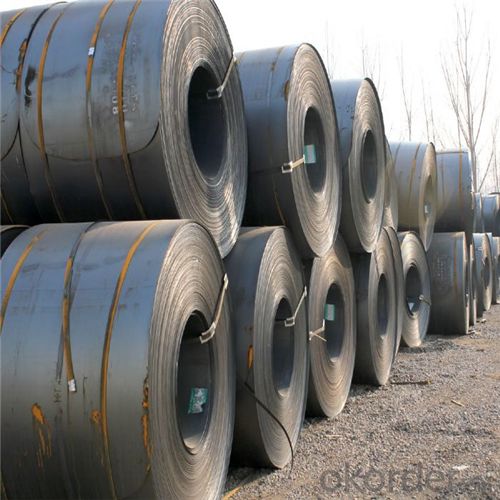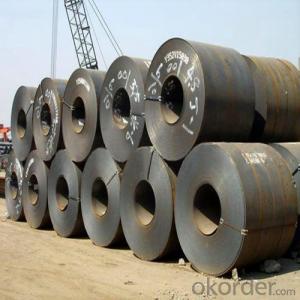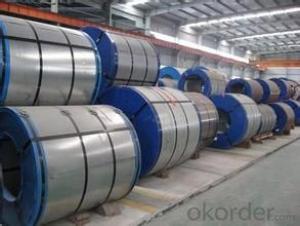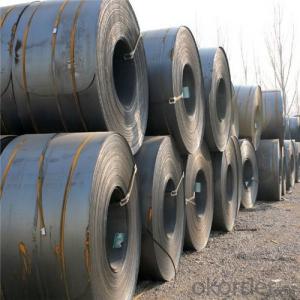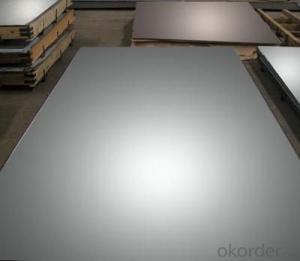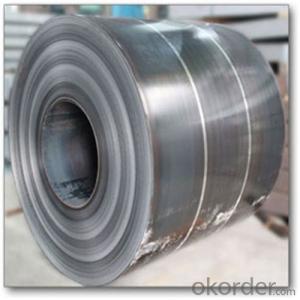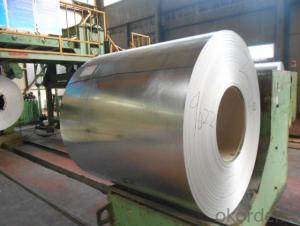Hot Rolled Steel Coil Used for Industry with Attractive Price
- Loading Port:
- Shanghai
- Payment Terms:
- TT or LC
- Min Order Qty:
- 50 m.t.
- Supply Capability:
- 10000 m.t./month
OKorder Service Pledge
OKorder Financial Service
You Might Also Like
Hot Rolled Steel Coil Used for Industry
1.Structure of Hot Rolled Steel Coil Description
Rolled to its final dimensions while it’s hot enough to scale, our hot-rolled steel is an amalgamation of the various qualities of steel. It can be in the form of plates, sheet and coils.
2.Main Features of the Hot Rolled Steel Coil
•High Purity
•Easy control and operation
•High strength
•Fast melting
•Competitive price
•Best Service
3. Hot Rolled Steel Coil Images
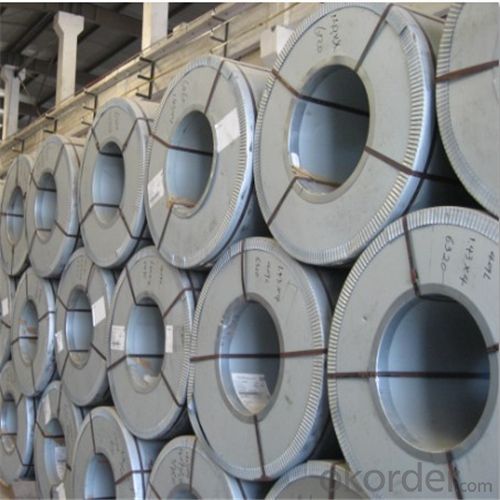
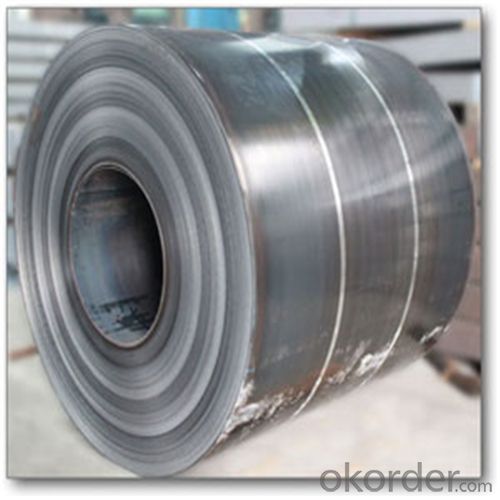
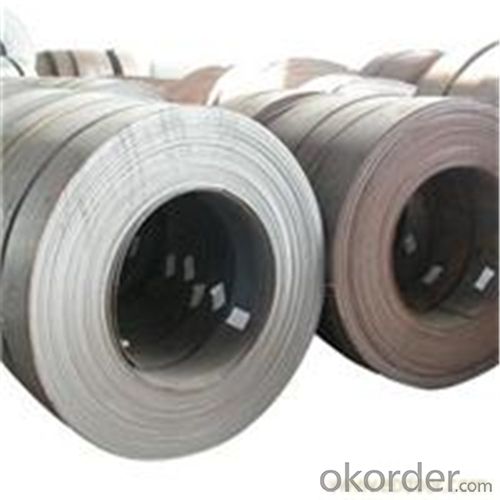
4. Hot Rolled Steel Coil Specification
HOT ROLLED STEEL COIL | |
Thicknenss | 1.5mm-25mm |
Width | 600mm-2000mm |
Sheets length | ---- |
Coil inner diameter | 762mm |
Surface treatement | ---- |
Coil weight | ---- |
5.FAQ of Hot Rolled Steel Coil
We have organized several common questions for our clients,may help you sincerely:
①How about your company?
A world class manufacturer & supplier of castings forging in carbon steel and alloy steel,is one of the large-scale professional investment casting production bases in China,consisting of both casting foundry forging and machining factory. Annually more than 8000 tons Precision casting and forging parts are exported to markets in Europe,America and Japan. OEM casting and forging service available according to customer’s requirements.
②How to guarantee the quality of the products?
We have established the international advanced quality management system,every link from raw material to final product we have strict quality test;We resolutely put an end to unqualified products flowing into the market. At the same time, we will provide necessary follow-up service assurance.
③How long can we receive the product after purchase?
In the purchase of product within three working days, We will arrange the factory delivery as soon as possible. The pecific time of receiving is related to the state and position of customers.Commonly 7 to 10 working days can be served.
- Q: Can steel coils be coated with anti-microbial materials?
- Yes, steel coils can be coated with anti-microbial materials. These coatings are designed to inhibit the growth of microorganisms on the surface, providing added protection against bacterial or fungal contamination.
- Q: I'm missing the arguement, and I've seen another question like this... but the steel toe issue has 2 scenario's right?... Let me label them out, the 2nd is the one that no one talks about?Note to anyone - how are your catapillar boots, your wolverines, and then your cheap walmart/sears brands?1. Steel toe on, toes get cut off because of something falling on them. OUCH!.. Reattach perhaps?2. This one is what I question. No steel toe, large object falls on toes. SMASH... Pudding in your shoes.Wouldn't it be safer to say you'de be better off with a steel toe?
- I wear Timberland Pro Series steel toe boots they are the best I have ever owned, I have tried Caterpiller Wal-Mart Brands both fell apart. One thing I do is when I get a pair of steel toe boots is have my wife run over the toe with her buick. The cat Wal-Mart Brands both bent cut the top of my foot, The timberland stayed intact I have been wearing them for over a year now, they have not fallen apart I have had a korklift run them over still holding great.
- Q: What is the average lifespan of a steel coil storage rack?
- The average lifespan of a steel coil storage rack can vary depending on various factors such as the quality of the rack, the frequency and intensity of use, and proper maintenance. However, on average, a well-maintained and properly used steel coil storage rack can last between 10 to 20 years.
- Q: How are steel coils used in the petrochemical industry?
- Steel coils are commonly used in the petrochemical industry for various applications such as manufacturing pipes, tanks, and pressure vessels. They serve as raw materials for fabricating these essential components used in the transportation, storage, and processing of petrochemical products. The strength and durability of steel make it an ideal material for withstanding harsh environments and high-pressure conditions, ensuring the safety and efficiency of petrochemical operations.
- Q: Can steel coils be rewound?
- Yes, steel coils can be rewound.
- Q: I remember my dad saying something about steel toed boots but I forgot =#92; I went and checked out all the stores and got a pair with good ankle support but they also have steel toes. Would this interfere with the shifter or anything? I figure if anything my dirt bike shoes have the steel toes too. Any opinion?
- My work boots are steel caps i ride to work and home in them. I also wear them when I'm too lazy to change into my proper boots.I don't see any dramas with you wearing them they do come in handy for dogs that try to latch onto you. Ride safe.
- Q: What are the different types of steel coil surface treatments for durability?
- There are several different types of steel coil surface treatments that can enhance the durability of the material. 1. Hot-dip galvanizing: This process involves immersing the steel coil in a bath of molten zinc, creating a protective zinc coating on the surface. Hot-dip galvanizing provides excellent corrosion resistance and can extend the lifespan of the steel coil. 2. Electro-galvanizing: In this method, a thin layer of zinc is electrodeposited onto the surface of the steel coil. Electro-galvanizing offers good corrosion resistance and is commonly used for indoor applications or where a thinner coating is desired. 3. Powder coating: Powder coating involves applying a dry powder paint to the surface of the steel coil and then curing it under heat. This creates a durable, uniform, and attractive finish that is resistant to chipping, scratching, and fading. 4. Organic coatings: Organic coatings, such as acrylics, polyesters, or fluoropolymers, are often applied to steel coils to provide protection against corrosion, UV rays, and other environmental factors. These coatings can enhance the durability and aesthetics of the steel coil. 5. Chromate conversion coating: This treatment involves applying a thin layer of chromate onto the surface of the steel coil. Chromate conversion coatings provide corrosion resistance and can improve the adhesion of subsequent paint or powder coating layers. Each of these surface treatments offers unique benefits in terms of corrosion resistance, durability, and appearance. The choice of treatment depends on the specific application requirements and the level of protection needed for the steel coil.
- Q: What are the common coil edge finishes?
- The common coil edge finishes include mill edge, slit edge, and deburred edge.
- Q: steel of beam has been rusted ,how can i repair it?
- The rust needs to be removed by what ever means works best for your situation.. Often a twisted wire wheel on a 4 1/2 angle grinder works quickly... a hand wire brush may work well for you, or just plain sandpaper and a LOT of elbow grease (hard work) will remove the rust. From there, a coat of primer paint made for steel. Any hardware store in your area would have such a primer, in quart cans or spray cans. Once that is dry (a good 24 hours for most formulations), you can spray or brush paint the beam most any color you wish.. I've had very good luck with acrylic enamel paints for such projects.. IF your steel is badly pitted, you should consider getting it inspected to insure it will still hold up or support what ever it was installed to do. If you want a smooth finish, once the rust removal is done, you can fill in the dips and pock marks with an auto body filler (Bondo is one brand name)... It comes in 2 parts (the main filler and a hardener) that are mixed well and used to fill in the holes and divits with a plastic spreader.. Once hard (in a few minutes with most brands of filler), sanding with sandpaper and a sanding block will smooth out the finish very nicely. From there, the same primer mentioned above and paint will finish up your project... Hope this helps some... Good Luck!
- Q: Can steel coils be used in the production of packaging materials?
- Yes, steel coils can be used in the production of packaging materials. Steel coils are commonly used to manufacture metal packaging materials such as cans, containers, and drums. The strength and durability of steel make it an excellent choice for packaging materials that require protection and stability. Additionally, steel coils can be easily shaped and formed to meet specific packaging requirements, making them versatile for various applications in the packaging industry.
Send your message to us
Hot Rolled Steel Coil Used for Industry with Attractive Price
- Loading Port:
- Shanghai
- Payment Terms:
- TT or LC
- Min Order Qty:
- 50 m.t.
- Supply Capability:
- 10000 m.t./month
OKorder Service Pledge
OKorder Financial Service
Similar products
Hot products
Hot Searches
Related keywords
